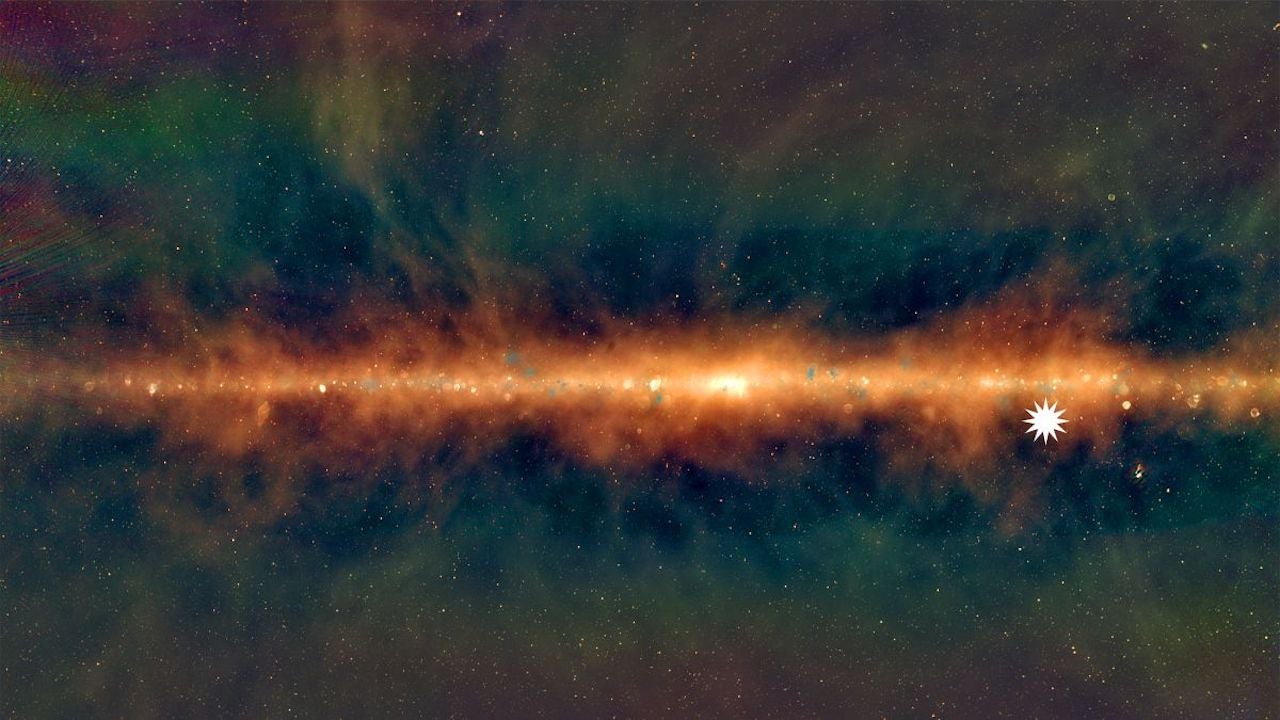Scientists have spotted a “spooky” celestial object blasting out radio signals, three times an hour, about 4,000 light-years away from Earth.
CNN reported on a new study, published in the journal Nature on Wednesday, that examines the discovery and analyzes archival data surrounding the mysterious object. The object – which is around 4,000 light-years (almost 24 quadrillion miles) away from Earth – was found to be releasing giant bursts of energy, causing it to brighten for roughly 30 to 60 seconds, once every 18 minutes.
Despite it sounding like it’s a great distance away, astronomers actually consider this to be relatively close in galactic terms, and have been speculating over what the source of the radio waves could be, given that it’s unlike anything ever seen before in space. Some have suggested that the object might be a neutron star or a white dwarf star with a very powerful magnetic field.
“This object was appearing and disappearing over a few hours during our observations,” said lead study author Natasha Hurley-Walker, an astrophysicist from the International Centre for Radio Astronomy Research in Western Australia. “That was completely unexpected. It was kind of spooky for an astronomer because there’s nothing known in the sky that does that. And it’s really quite close to us — about 4,000 light-years away. It’s in our galactic backyard.”
A student at Curtin University, named Tyrone O’Doherty, first discovered the object while using the Murchison Widefield Array (MWA) telescope in outback Western Australia. The original data was collected between January and March 2018, though it has been observed in several studies since as astronomers continue to be puzzled by the flaring space object.
Objects in space that pulse on and off are often referred to as “transients,” however, ICRAR astrophysicist and co-author Dr. Gemma Anderson explained that finding something that turns on for about a minute is what differentiates this discovery from others. Some researchers suspect it may be a magnetar (a neutron star with a very strong magnetic field).
Strange New Worlds: The Weirdest Planets Discovered in Our Universe
“It’s a type of slowly spinning neutron star that has been predicted to exist theoretically but nobody expected to directly detect one like this because we didn’t expect them to be so bright. Somehow it’s converting magnetic energy to radio waves much more effectively than anything we’ve seen before,” added Hurley-Walker. “More detections will tell astronomers whether this was a rare one-off event or a vast new population we’d never noticed before.”
Astronomers will continue to monitor the object while undoubtedly making new discoveries along the way. Last year, scientists found what they believed to be the first signs of a planet beyond our galaxy in addition to the 139 new “minor planets” that were discovered in the far reaches of our own solar system, which may be amongst the weirdest planets in our universe.
Adele Ankers-Range is a freelance writer for IGN. Follow her on Twitter.
Thumbnail image credit: Dr Natasha Hurley-Walker/ICRAR/Curtin and the GLEAM Team





